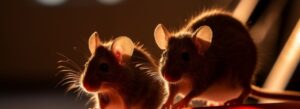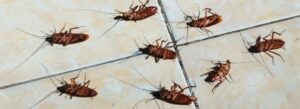Every summer in the UK, something strange seems to happen overnight. Seemingly out of nowhere, a swarm of winged insects takes to the skies, crawling over patios, rising from cracks in pavements, and even appearing in bedrooms. For many, this sudden invasion sparks alarm — but what exactly causes the sudden appearance of flying ants?
What Are Flying Ants?
Flying ants aren’t a separate species; they are simply the reproductive members of the common black garden ant (Lasius niger). These winged males and virgin queens are produced specifically for the purpose of reproduction and forming new colonies. This is a critical stage in the life cycle of an ant colony.
Meet the Queen Ant
The queen ant is the heart of every ant colony. She is larger than the worker ants and is responsible for laying all the eggs that sustain and grow the colony. During the flying ant phase, virgin queen ants leave the nest to take part in the nuptial flight. Once mated, they land, shed their wings, and burrow into the soil to start a new colony. She will lay her first batch of eggs alone, nurturing them until they become the first generation of worker ants.
Understanding Ant Colonies
An ant colony is a complex society built around cooperation and survival. Most black garden ant colonies in the UK are founded by a single queen and grow to thousands of individuals. The colony includes:
- Queen: Sole egg-layer and leader
- Workers: Sterile females responsible for food gathering, defense, and maintenance
- Drones: Males whose only purpose is to mate
Once the colony reaches maturity, it produces reproductive males and females (flying ants) to disperse and continue the species. The colony’s survival hinges on this short, critical mating event.
The Science Behind Flying Ant Day
Flying ants emerge for one reason: to mate. The phenomenon, often dubbed “Flying Ant Day,” is part of a synchronised mating ritual known as a nuptial flight. This event is triggered by a unique set of environmental conditions:
- Warm temperatures (typically above 20°C)
- High humidity
- Calm or still air
- Recent rain followed by sunshine
These conditions allow for optimal flying weather and improve the chances of reproductive success. While the sudden surge can appear chaotic to us, to the ants, it’s a well-timed, strategic move to ensure maximum gene dispersal.
Not Just One Day: A Season of Flight
Despite the name, there isn’t one single “Flying Ant Day” across the UK. Instead, there is a season of flying ants, generally spanning from late June through August. Multiple colonies from various areas take to the skies over this period. You might see swarms several times depending on your local microclimate.
In Kent, for example, coastal zones might see early emergence due to higher humidity, while inland towns such as Maidstone or Ashford experience the peak slightly later. Each colony sends out its winged ants when the conditions are right — not according to a national schedule.
Why So Many All at Once?
The sudden appearance of so many flying ants is a survival tactic. By emerging simultaneously in massive numbers, colonies overwhelm predators (known as predation) such as birds, frogs, spiders, and beetles. This strategy increases the odds that at least some ants will survive long enough to reproduce.
Mass emergence also increases genetic diversity. With multiple colonies releasing flying ants on the same day, inter-colony mating is more likely. This reduces inbreeding and strengthens the overall ant population.
What If You’re Seeing Flying Ants Indoors?
While it’s normal to see flying ants outside during summer, seeing large numbers inside your property could indicate a nest inside the structure. You may have a colony in:
- Cavity walls
- Loft insulation
- Wooden beams or floorboards
- Soil beneath patios
- Under kitchen flooring or near heat sources
Indoor infestations often point to long-established colonies. You may also notice worker ants in your kitchen year-round if the colony is well-established.
Lifecycle: From Egg to Queen
Flying ants start their lives as eggs laid by the queen ant. These develop into larvae, pupae, and finally adult ants. The colony decides whether a new egg will become a worker or a reproductive ant based on environmental conditions and colony needs.
When it’s time to reproduce, the queen produces eggs that will become males and virgin queens. These winged ants are nurtured by the worker ants until the colony detects the right conditions to trigger flight.
Pheromones and Flight
Ants use pheromones — chemical signals — to communicate everything from danger to food trails. During nuptial flights, pheromones help synchronise mass take-off. Queens also release special mating pheromones that attract males in flight.
Interestingly, weather radar systems in the UK have detected clouds of flying ants mistaken for rain. This gives you a sense of the scale of these events.
Confusion with Other Pests
Flying ants are often mistaken for:
- Wasps (due to size and wings)
- Cockroaches (especially when seen crawling inside)
- Beetles (when they hit windows)
- Fleas (due to jumping behaviour of small ants)
It’s important to distinguish flying ants from other pests to apply the correct treatment. While fleas and cockroaches pose health risks, flying ants are more of a seasonal nuisance unless they nest indoors.
DIY Prevention and Repellents
You can reduce flying ant numbers and discourage nesting with basic household remedies:
- Peppermint oil: A natural insect repellent; mix with water and spray around entry points.
- Essential oil blends: Use citronella, tea tree, or clove oil with water and a few drops of dish soap.
- White vinegar: Breaks up scent trails and deters ants from returning.
- Lemon juice and cinnamon: Disrupt pheromone signals and discourage entry.
These solutions can work short-term but may not address the root colony, especially if it’s hidden in the wood, soil, or cavity walls.
Outdoor Factors That Attract Ants
Flying ants are often drawn to:
- Rotted wood: Old fences, sheds, decking
- Cracks in patios: Access to warm, dry nest sites
- Flower beds and soil: Moisture and easy burrowing
- Fruit trees and compost bins: Sugary substances and warmth
Reducing clutter, trimming plants, and avoiding standing water can make your garden less appealing to nesting queens.
How Pest Control Can Help
If DIY efforts fail or the infestation keeps returning, it’s time to call in professionals. At Innovation Pest Control, our team is trained to:
- Identify the exact nest location
- Use targeted baiting systems
- Apply low-toxicity sprays safe for homes with pets or children
- Offer preventive treatments for recurring hotspots
Companies like Rentokil Initial also offer pest control services, but local specialists like us often provide faster, more affordable, and more personalised solutions tailored to Kent’s unique environment.
Professional Methods vs DIY
While home remedies like peppermint or essential oils offer quick relief, they rarely destroy the colony. Pest control experts use regulated, tested substances that are more effective and longer-lasting. We also assess:
- Nest size and age
- Risk of indoor migration
- Repeat infestation likelihood
How to Prepare for Flying Ant Season
- Inspect your property in spring for ant trails and nests
- Trim vegetation that touches the house
- Seal cracks in brickwork, around vents and pipes
- Monitor patios and pavers for soil disturbances
- Install insect repellent barriers around entry points
Should You Be Concerned?
Flying ants aren’t dangerous in the same way as wasps or cockroaches. They don’t bite (most species), they don’t sting, and they aren’t known to spread disease. But they can become a nuisance pest if their colony ends up inside your home.
They also signify a well-developed colony. If you’re seeing multiple swarms year after year, that means the queen ant is alive and well — and laying thousands of eggs.
Dealing with Recurrent Infestations
Recurrent flying ant issues usually point to:
- An old nest that’s been active for years
- Soil nests under driveways or patios
- Indoor colonies in wood or insulation
This is where professionals step in. DIY isn’t always enough once a colony is established.
Final Thoughts
Flying ants may seem to appear out of nowhere, but their emergence is a natural — and essential — part of the ant reproduction cycle. They are not inherently harmful, but when they repeatedly appear inside your home, disrupt your garden, or indicate internal colonies, they cross the line into being a pest.
From kitchen sightings to full-scale outdoor swarms, the key is understanding the lifecycle, detecting signs early, and preventing long-term nesting. Don’t wait until the queen ant produces another season’s worth of winged invaders — deal with flying ants proactively.
Need help with flying ants in your home, garden, or business? Contact Innovation Pest Control today via email or phone for fast, local, and fully insured pest control across Kent. We offer discreet service, satisfaction guarantees, and effective solutions for everything from flying ants to fleas, beetles, and more.
Stay ahead of the swarm. Pest control isn’t just protection — it’s prevention.







